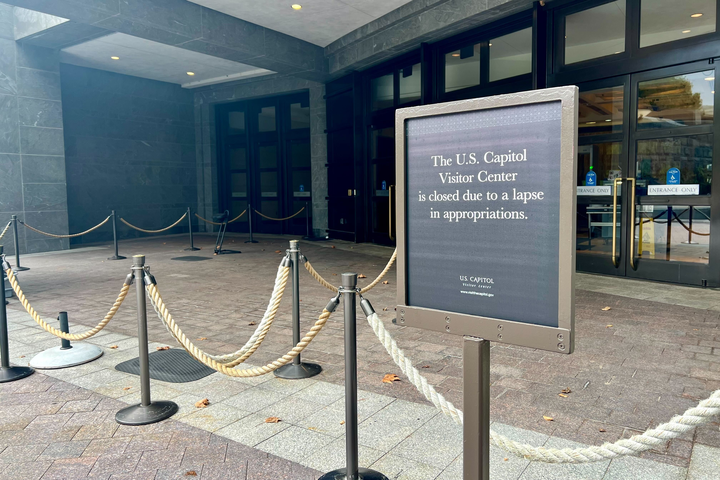WASHINGTON — Smithsonian museums and federally run tourist sites in the nation’s capital began shutting down last week and, by Oct. 11, were fully closed as the federal government shutdown continued. The closures left tourists scrambling and local businesses bracing for losses.
The Smithsonian Institution, funded primarily through federal appropriations, has been able to keep some museums open using prior-year reserves, but those funds have run out. All 19 Smithsonian museums and the National Zoo have closed.
But it’s not just the Smithsonian. Other tourist attractions run by the federal government are also closed. That includes: the U.S Capitol and White House tours, the Library of Congress, the U.S. Botanic Garden, U.S. National Arboretum, the National Archives, Ford’s Theatre, and rides to the top of the Washington Monument.
Some privately funded museums remain open, including the Phillips Collection, the National Museum of Women in the Artsand the Spy Museum, but many require entrance fees.
Destination DC, the city’s official tourism marketing organization, said the timing raised the stakes for the capital’s tourism industry.
“October is a peak period, with many meetings, conventions, special events and reasons to visit Washington, DC,” said Elliott L. Ferguson, II, president and CEO of Destination DC. “That’s a major difference for visitation compared with a shutdown that hits in January.”
Dorothy Phillips, a Washington resident, had family from Florida visiting this week. They were planning to visit the National Museum of African American History and Culture, the National Air & Space Museum, and other Smithsonian museums. Instead, she’s scrambling to come up with other activities. “They’re only here for a couple of days and we’ve planned this forever,” she said. “I don’t know where else to go.”
Esther Lee, a first-time D.C. tourist from Taipei City, Taiwan, arrived determined to check off the classics, including a Capitol tour. But it was canceled.
“I’m very disappointed. I came to America’s capital to learn more about the U.S, and I got greeted with the shutdown,” she said in Mandarin.
The Smithsonian museums draw an estimated 27 million visitors annually. Local tour operators, dependent on museum-goers as customers, said they are canceling route segments or folding in longer waits. Some restaurants have told staff to expect thinner lunch service. Hotels around Foggy Bottom, Capitol Hill, and L’Enfant Plaza are bracing for impact.
“We’ve been preparing for more cancellations, that’s for sure,” said a manager at The Royal Sonesta Hotel in Washington, D.C.
While outdoor monuments remain partially accessible, the shutdown means closed public restrooms, absent ranger staff and closed gift shops.
Aditi Fruitwala, a D.C. resident whose friends from Los Angeles visited last week, described the situation as deeply disruptive. “We had tickets to Ford’s Theatre that got canceled because it’s closed,” she said. “It’s a really big disruption in our lives.”
Other visitors also noted how the shutdown shifted their usual outings into private venues or paid experiences they had not originally budgeted for.
“We need to get more tickets for other things,” said one visitor from Virginia. “We’re paying for things we wouldn’t normally pay for…it adds up fast.”
As the shutdown drags on, local businesses are dealing with cancellations and refunds, tourists are shifting plans and the city is facing negative word-of-mouth.
To counter the perception of a fully closed city, Destination DC revived a contingency campaign.
“On Oct. 1, we re-launched ‘DC is Open’ to communicate that DC is open and ready with so much to see and do despite a federal government shutdown,” Ferguson said.
Run by Destination DC, Washington.org, DC’s official tourism site, has been updated with the status of federal sites and alternatives in “dining, shopping, theater, sports and more.”
According to Ferguson, a record 27.2 million people visited the nation’s capital in 2024, spending $11.4 billion, resulting in $2.3 billion in tax revenue and supporting 111,500 jobs.
“If organizers don’t realize their full attendance, their bottom line is affected. Lower visitor numbers adversely affect our local businesses and residents. When meetings and events don’t take place, people aren’t working,” he said.


